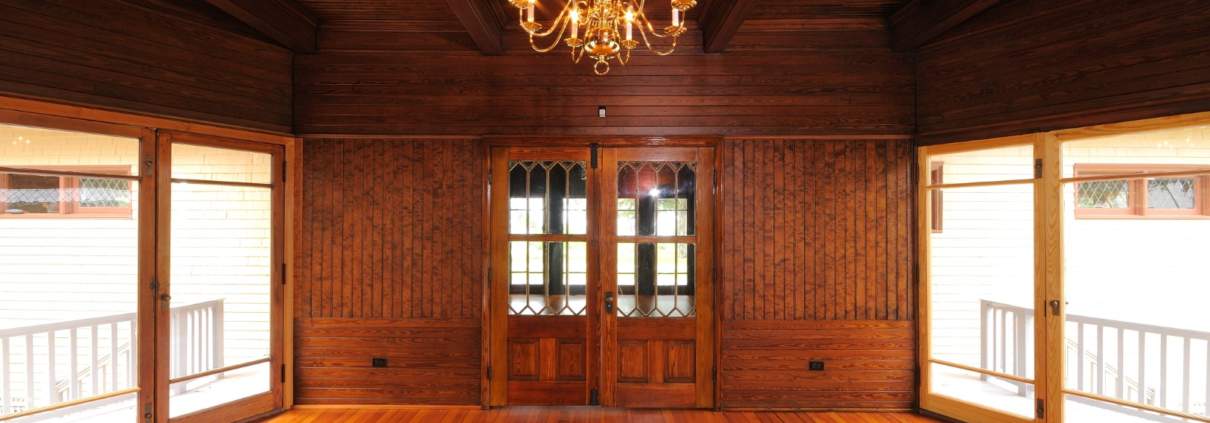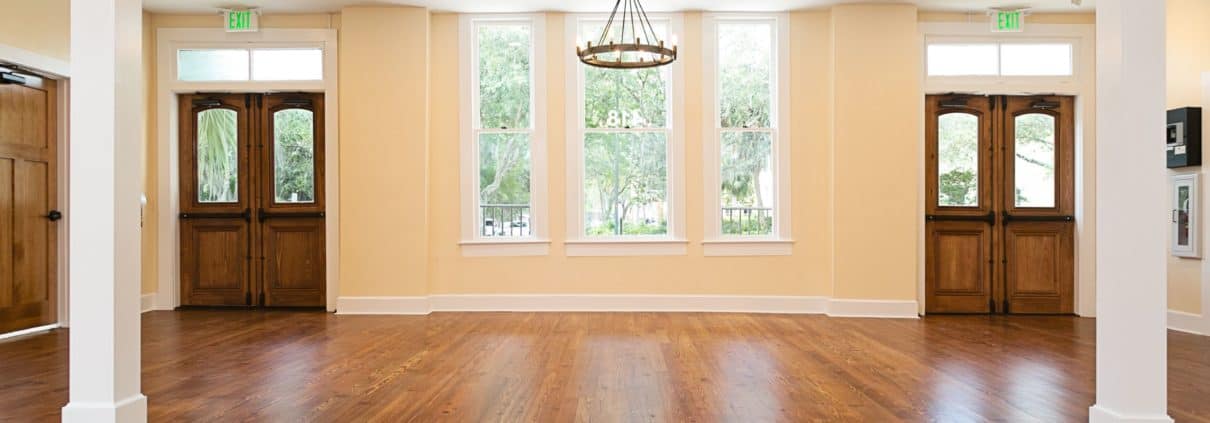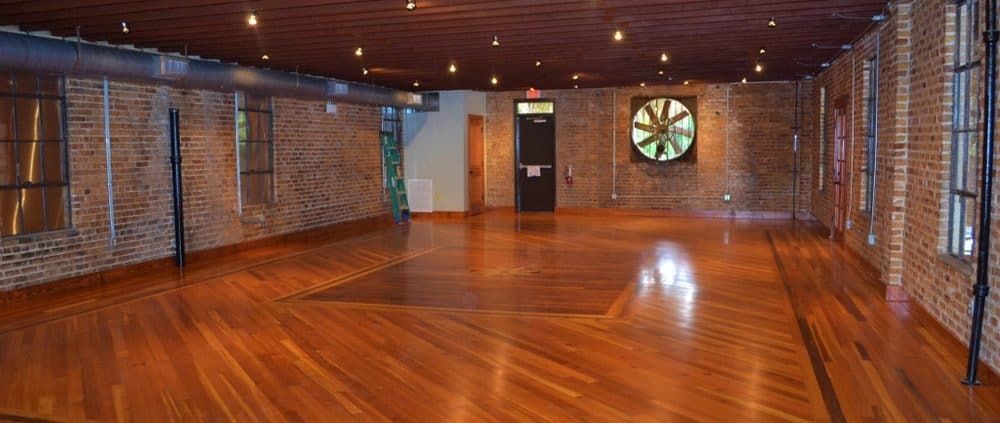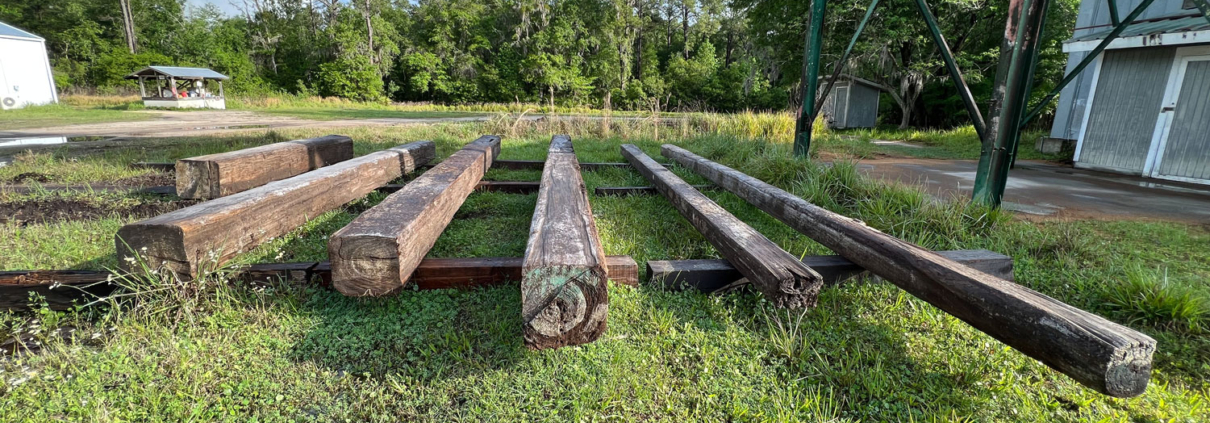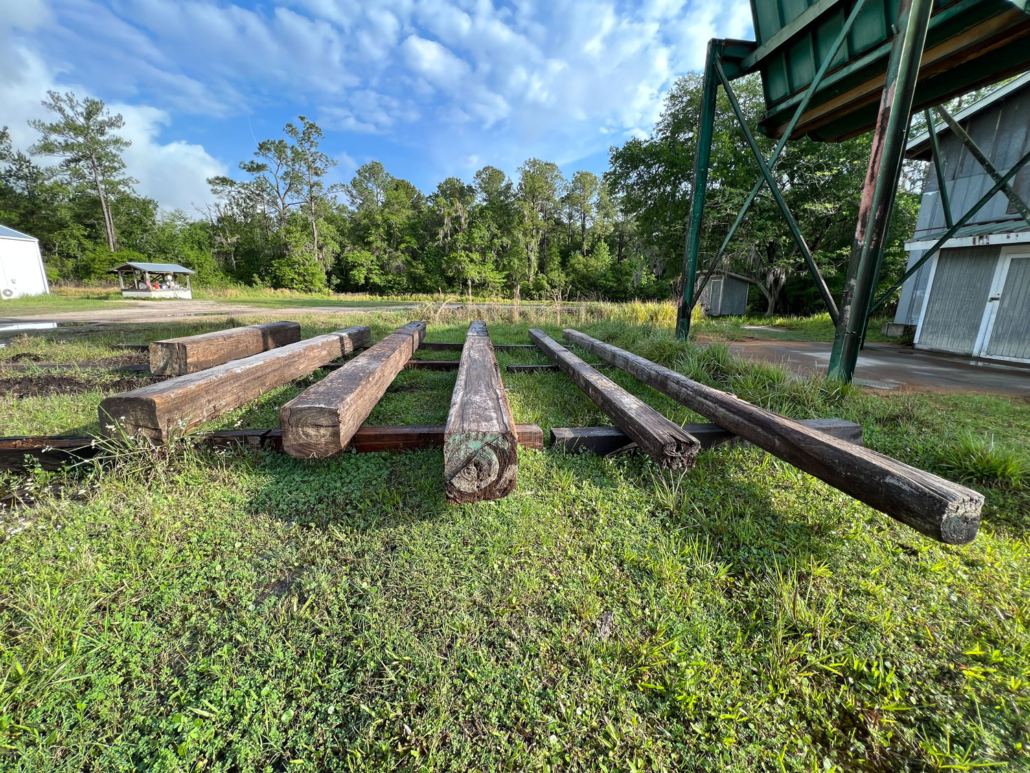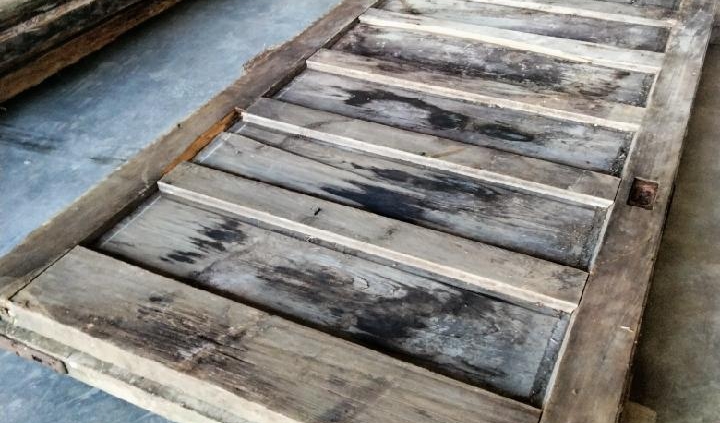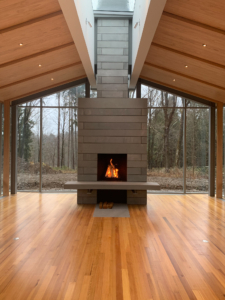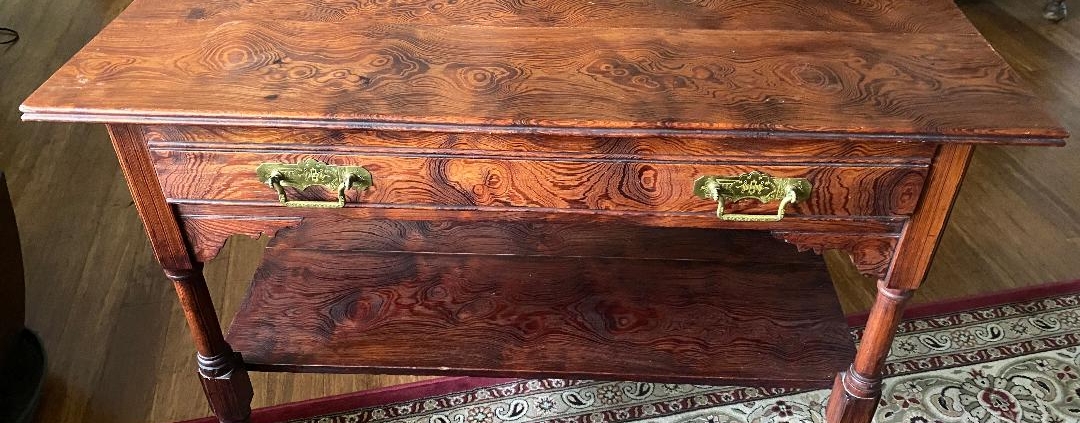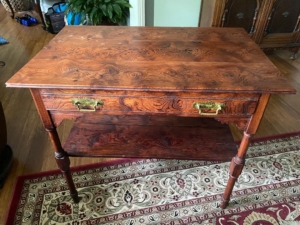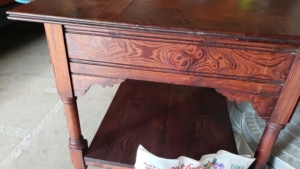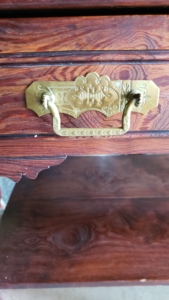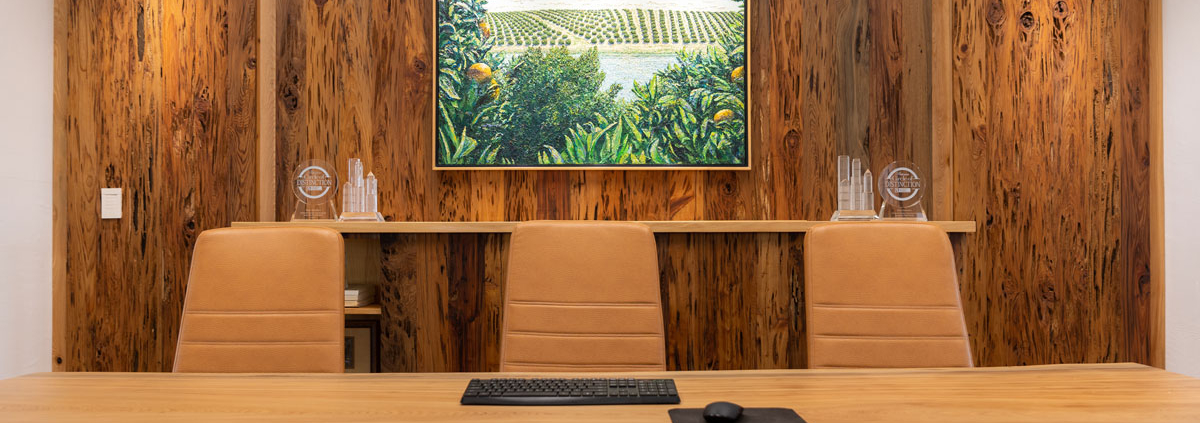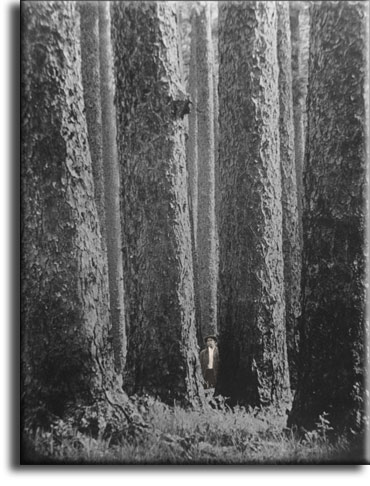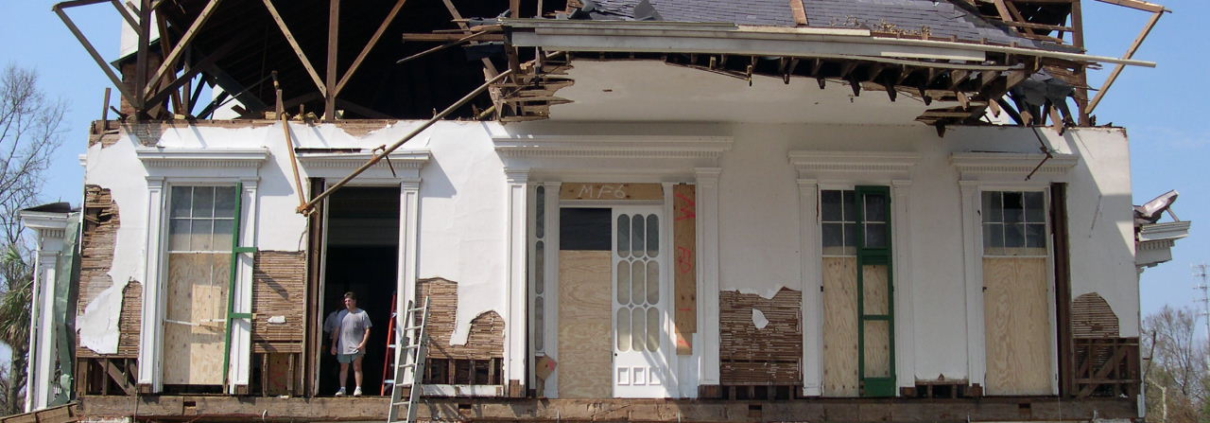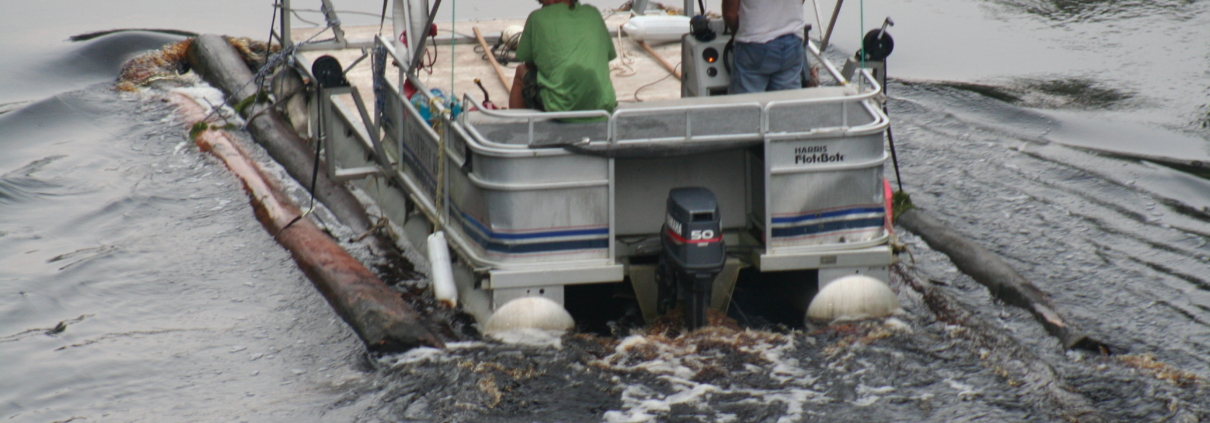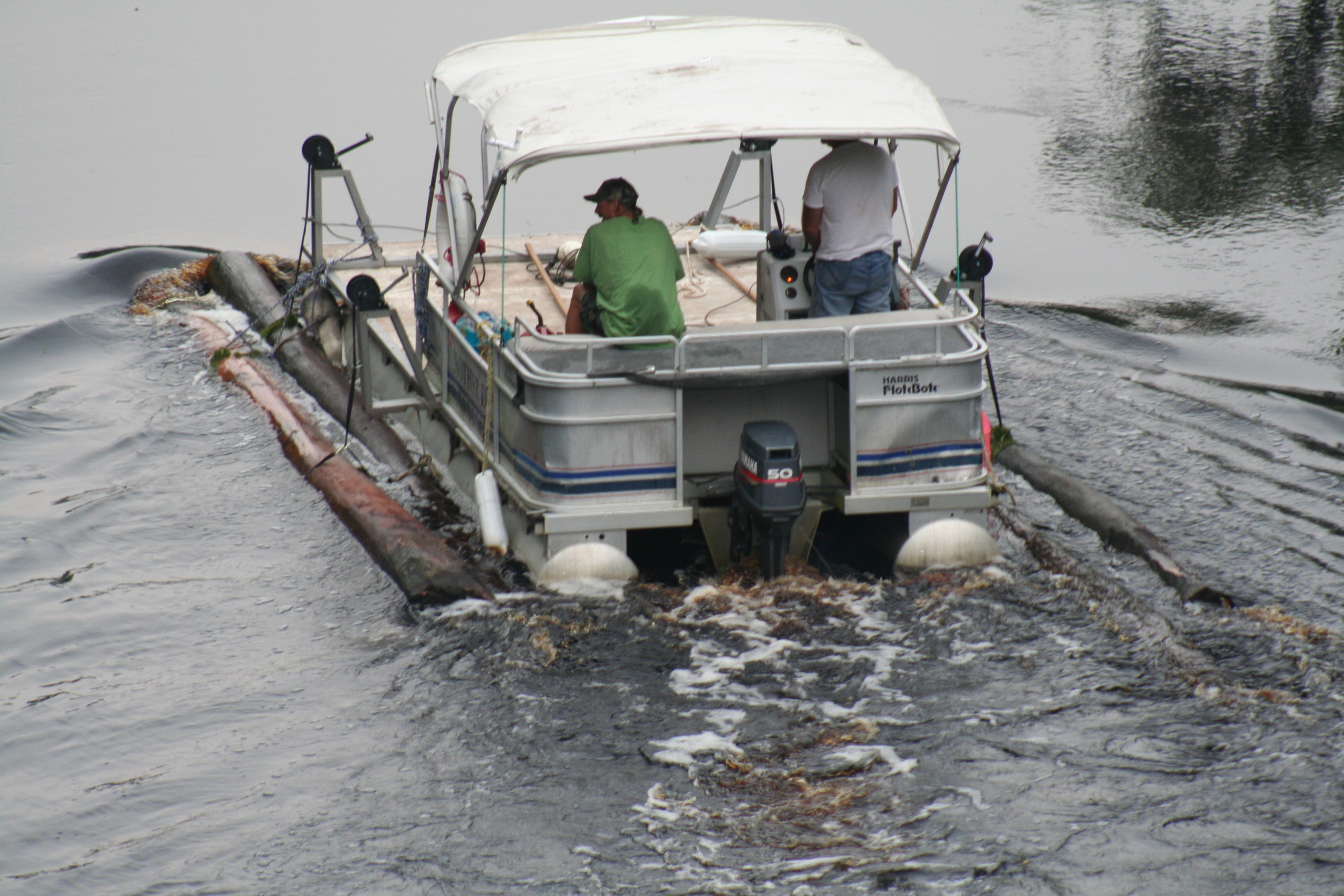In August 2005, Hurricane Katrina ravaged the Gulf Coast. A great number of historic homes were among its many victims. In Ocean Springs, Mississippi, two such notable landmarks were the Louis Sullivan and James Charnley cottages. Charnley was a Chicago based businessman and lumber baron who owned and timbered large tracts of Mississippi longleaf pine. Sullivan was a renowned Chicago architect and father of the modern skyscraper. He and Sullivan were good friends. The baron commissioned the architect to design and build him a vacation home on the Gulf where he could escape the rigors and the winters of the Windy City. On the adjacent property, Sullivan fashioned his own vacation cottage, a slightly smaller version of the Charnley retreat.
Helping to design and build these gulf side treasures in 1890 was Sullivan’s apprentice, Frank Lloyd Wright. Actually, great controversy has revolved around exactly which architect played the greatest role in the design. The two cottages looked nothing like the highly decorative and largely vertical Victorians and Queen Annes so popular in that day. Instead, the cottages were quite simple and reached out across the landscape in a horizontal fashion that suggest a precursor to Wright’s later Prairie style. They were considered to be two of the earliest examples of American modern residential architecture.
Katrina showed little mercy. The storm battered the two homes relentlessly. When the tempest had passed, the Sullivan cottage was completely gone. Many have speculated that it was hit by a tornado. Charnley was badly beaten and sat straddling what was left of its foundation.
Enter the very determined Historic Preservation Division of the Mississippi Dept. of Archives and History (MDAH). The division organized volunteers to salvage literally thousands of pieces of the home immediately after the storm and persuaded the property owners not to let FEMA bulldoze the house. Further, the MDAH raised the grant funds that permitted the hiring of fine restoration professionals John G. Waites Associates Architects, Larry Albert & Associates Architects, and J.O. Collins Contractor to undertake the restoration. Finally, the department assisted the Mississippi Dept. of Marine Resources in acquiring the Charnley-Norwood property as a key component of the Mississippi Gulf Coast National Heritage Area.
General contractor, J.O. Collins, began putting the survivor back together and architect, Larry Albert, spec-ed Goodwin to provide the flooring and the curly heart pine paneling on the walls. The Goodwin company milled 800sf of curly heart pine to adorn the walls and another 1000sf of 3-1/4” LEGACY (building reclaimed) VERTICAL heart pine to replace the floor. The resulting restoration is over the top and today, Charnley once again stands overlooking the Gulf of Mexico; a shining example of accurately and lovingly finished historic restoration.
Photo curtesy of the Mississippi Dept. of Archives and History.
The Lakeview Condos in historic St. Augustine Florida date back to the late 1800s. The Lakeview building was constructed between 1885-1893 by the firm of McGuire and McDonald, famously known for constructing the Ponce De Leon Hotel. Both structures were built by Standard Oil tycoon, Henry Flagler; the Ponce as a luxury hotel and the Lakeview building as the male staff quarters for the hotel. Originally, the Lakeview building was referred to as the “Ponce De Leon barracks.”
Fast forward to 2004 when the building was purchased and developed into luxury condominiums. The Lakeview Condos sit on the edge of Lake Maria Sanchez in a prime area of town just blocks off the heart of the old city.
October 2016 brought powerful hurricane Matthew to the area, which flooded the historic district of America’s oldest city as it passed at high tide. Sadly, the Lakeview building took on five inches of water from Lake Sanchez. Goodwin worked closely with the owner’s association to replace the original heart pine flooring. Most units were restored using River-Recovered Heart Pine Character or Antique Longleaf pine. Much of the replacement heart pine was either 2-1/2″ or 3-1/4″.
As fate would have it 2017 saw hurricane Irma blow through most of the entire peninsula of Florida and once again the Lakeview building had an unwanted visit by Lake Maria Sanchez. Goodwin replaced the heart pine floor for a second time. The 800-1000sf units are now light and airy living spaces with wonderful architectural transoms over the doors and arched passageway. Goodwin is always most pleased when we can be a part of historic restorations.
This week for Historic Preservation Month we revisit two restoration projects that have been honored by the Florida Trust for Historic Preservation (FTHP). In 2015 the Gainesville, FL Firestone building was recognized by the FTHP, receiving an Honorable Mention for Adaptive Reuse. In 2018 the Gainesville, FL Matheson History Museum Library & Archives was recognized by the FTHP, receiving Meritorious Achievement for Adaptive Use.
Learn more about the Goodwin Company’s historic preservation projects here.
Be sure to follow the Florida Trust For Historic Preservation’s Facebook page for other historic preservation month information!
It’s almost May and May is designated as historic preservation month. Here at the Goodwin Company, we get pretty excited about that. For 45 years we’ve been the millers of fine River Recovered® and building reclaimed antique Heart Pine and Heart Cypress. Preservationists and historic preservation architects often request Goodwin Company products for their projects. Join us in the month of May for a short series of videos that celebrates and highlights the many historic preservation projects that the Goodwin Company has been a part of over the years. Happy May!
Learn more about the Goodwin Company’s historic preservation projects here.
Follow the Florida Trust For Historic Preservation’s Facebook page for other historic preservation month information!
Recently, we pulled River Recovered® longleaf pine logs out of our millpond to mill for several upcoming large projects. Among the material pulled were these six hand-hewn beams. Very rarely do our river logging partners come across beams like these on their dive excursions. Some are milled pieces. Others are obviously hand-hewn beams. So, what gives? How do squared timbers end up underwater? The answer is rather simple.
More longleaf southern yellow pine lumber was processed and exported out of Pensacola Bay, Florida than any other port in the country. It’s a good place to look for some historical context. Indeed, in the year 1900, Florida’s single largest economic revenue producer statewide was the mill in Bagdad, Florida on the western panhandle.
As mills like this one and others processed harvested longleaf, they barged it out to ships waiting in the deeper waters of the bay or simply floated it to the ship in rafts. The squared and hewn beams were easier to load into the ship than logs.
Accidents happen. From time to time, those barges overturned and sank or flotillas simply broke apart and the densest members sank to rest for a century or more on the bay bottom.
Heart pine beams like these may have been destined for industrial warehouse construction in the Northeast, for the construction of grand hotels across Europe, or even supportive ribbing in the diamond mines of South Africa.
These beams have a story to tell and each is a unique antique, a true part of American History. They were cut into squares and hewn 200 or more years ago and are among the oldest antique heart pine beams available.
Congratulations to Bohlin Cywinski Jackson Architects and project architect Nicholas Snyder on their recent award. Their Light Path project was selected as an Honor winner in the 2021 Residential Architect Design Awards, New Approaches to Housing and Specialty Homes: Co-Living category. This Waverly, PA home features a 3-1/4” vertical heart pine engineered floor from the Goodwin Company. This award was awarded by Architect Magazine. It is the official Journal of the American Institute of Architects.
See more photos of this project
Curly Heart Pine Experts. Often the Goodwin Company is called on for our wood identification expertise. At the end of October, Judi H. reached out to us about identifying the wood on this beautifully crafted desk. Judi said, “I’m reaching out to you as the only people I can find who seem to know what curly heart pine looks like… Not even the specialty lumber yards up here know what it is.” She was told by the previous owner that this was burly quilted maple. We were able to confirm to Judi that this was indeed a Curly Heart Pine desk.
One of the first things we ask potential clients is for them to send us a photo of their existing wood. In these photos, we look for grain patterns, width, length, color, et cetera. We have used this process for countless projects in order to seamlessly match existing wood or to keep the original design intact. We are curly heart pine experts and experts in heart pine and heart cypress identification. Give us a call today or better yet send us a photo for help with your antique wood identification needs.
Happy National Forest Products Week! Since 1960 the third week of October has been designated as National Forest Products Week (NFPW). The modern celebration has stayed true to the initial proclamation and has added the environmental needs of keeping our forests healthy for future generations.
“Whereas the bounty of our forest and timber lands provides our people with a source of strength and pride; and
Whereas as a major renewable resource, supported by the science of modern forestry, wood offers the availability and abundance to satisfy the Nation’s ever growing needs for many products—lumber, paper, building materials, chemicals, furniture, and cloth—all dedicated to improving the lives of our people…” – Dwight D. Eisenhower, Proclamation 3371
The Longleaf Pine forest is the prime example of why both views of the NFPW are important. The remnant of this once vast forest shows the importance of sustainably harvesting our natural resources. Being over-harvested in the 19th and 20th century we are lucky that these logs have survived to be used today. Had they rotted this resource would be limited at best today. To the original proclamation Heart Pine is an outstanding resource we have available to use. We should take pride in our forests and their abilities to provide for us and work together to ensure their health and availably for years to come.
https://heartpine.com/goodwins-environmental-mission/
https://www.fs.usda.gov/science-technology/forest-products-week
https://www.presidency.ucsb.edu/documents/proclamation-3371-national-forest-products-week-1960
Before the Europeans arrived in the New World, longleaf pine was the principal tree species found in extensive pure stands over at least 70 million acres and another 10 million acres in stands mixed with other pines and hardwoods. The reason longleaf dominated is that it, more than any other southern tree, has learned to live with fire. The original longleaf forest not only was able to survive the frequent fires started by lightning, it depended upon fire. It may actually have helped propel and sustain the fires that regularly burned it.
The longleaf has evolved marvelous physical adaptations to tolerate fire when young. Instead of growing upward right away as most saplings do, longleaf seedlings “sit” flat on the ground in what is termed the grass stage for periods of three to fifteen years. During this time the young tree grows a long, heavy taproot that helps it reach far down into the sandy soil toward moisture. When the young plant finally starts to grow tall, the stored food in the taproot helps it shoot rapidly upward. At the same time that it is racing skyward, the tree delays putting out branches, giving young saplings a distinctive bottlebrush appearance. The tree’s “jumping upward” is a strategy for surviving in an area of frequent fires. By growing rapidly upward in a single spurt, the young tree minimizes the amount of time its growing tip is vulnerable to destruction by fires. Otherwise, a young tree growing steadily year by year and putting out multiple branches would be vulnerable to ground fires for a far greater period.
This variety of adaptations that help longleaf pines resist death by fire, is eclipsed only by a fantastic secondary function of the needles. This supremely fire-resistant tree produces needles that have more volatile resins and oils than any other southern pine, rendering the dry needles extremely flammable.
Learn more about the history of Longleaf Pine
Milling Antique River-Recovered® Heart Pine at The Goodwin Company
What exactly is deadhead logging? Deadhead logging is the removal of tree logs preserved underwater that were previously cut down during Florida’s logging boom in the late 1800s and early 1900s. Back in the day, the idea was to cut virgin logs in hopes they would float down rivers, eventually arriving at sawmills for processing. Our very own George Goodwin started his method of extracting river logs from the Suwannee River in the mid-1970s. Careful logging practices involve removing logs in an eco-friendly way, ensuring the surrounding environment and wildlife remain undisturbed.
Fun fact: Deadhead logs are named this way because the small end of the log floats around like a head out of the water!
Roughly ten years after George began pulling upriver logs, other loggers started following in his footsteps. Issues started to occur, like disrupting fishermen and interrupting people trying to enjoy the river. But perhaps the most prominent issue involving river loggers during this time period was the logs were not extracted from the river sustainably. The need for some sort of protocol designed to protect the environment became apparent quickly.
George began his journey meeting with politicians and suggested ways the State of Florida could regulate river log recovery in an environmentally sound manner. George requested meetings with the Department of Submerged Lands and the Department of Environmental Protection, the Sierra Club, the Nature Conservancy, and other organizations. Goodwin offered to demonstrate the correct way to recover these logs, which took place on the Suwannee, Apalachicola, and the Choctawhatchee Rivers. George showed the observing loggers and state officials how to tie off both ends of the log so it did not drag on the river bottom. Goodwin explained how there were many logs on the river bottom; however, most were second growth downed by storms and not worth recovering. Next, demonstrations were performed that taught how to tell log differences by examining the density of the growth rings on the end of the logs. Last but not least, we helped organize the curriculum for a Master Log Recovery Class that is required to pass for loggers in the state of Florida.
By the mid-1990s, Goodwin succeeded in helping create an environmental permit program proposal to present to the Florida legislature. Part of the permit required providing an archeological survey of the area of the river to be logged to prove that ancient sites and endangered species were not disrupted. Former Governor Lawton Chiles signed the permit into law in 1998. Goodwin Company also succeeded in owning the Federally Registered Trademark for the term ‘River Recovered®’, pioneered by our very own George Goodwin!

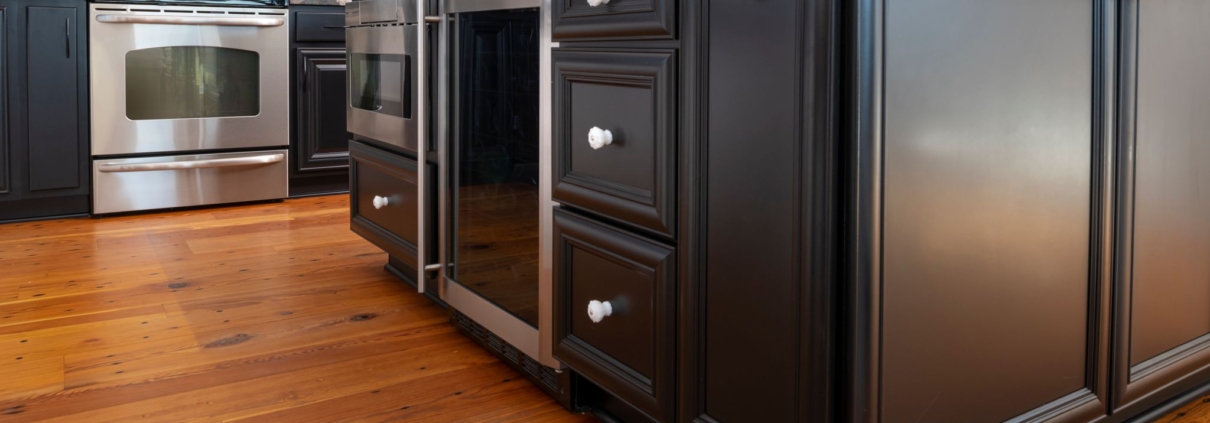 The Goodwin Company | HeartPine.com
The Goodwin Company | HeartPine.com The Goodwin Company | HeartPine.com
The Goodwin Company | HeartPine.com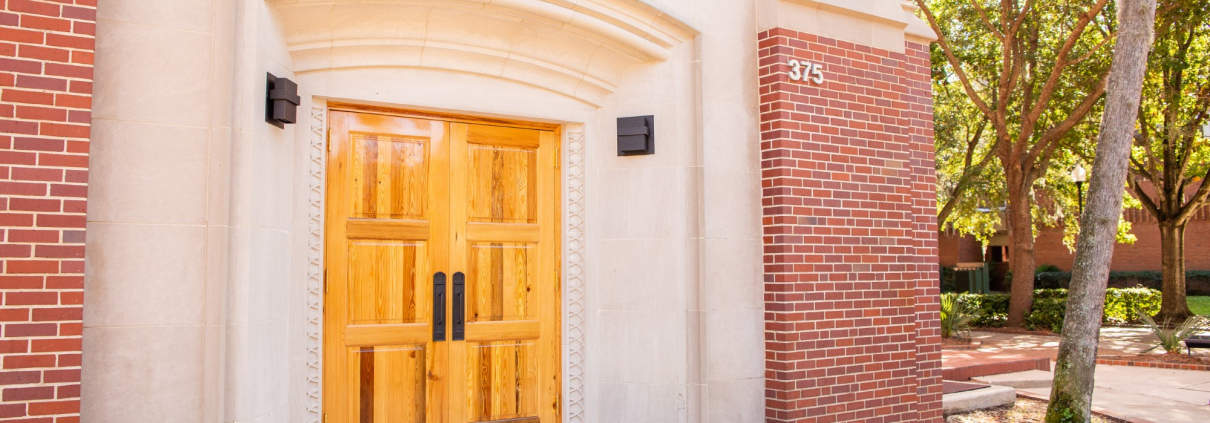

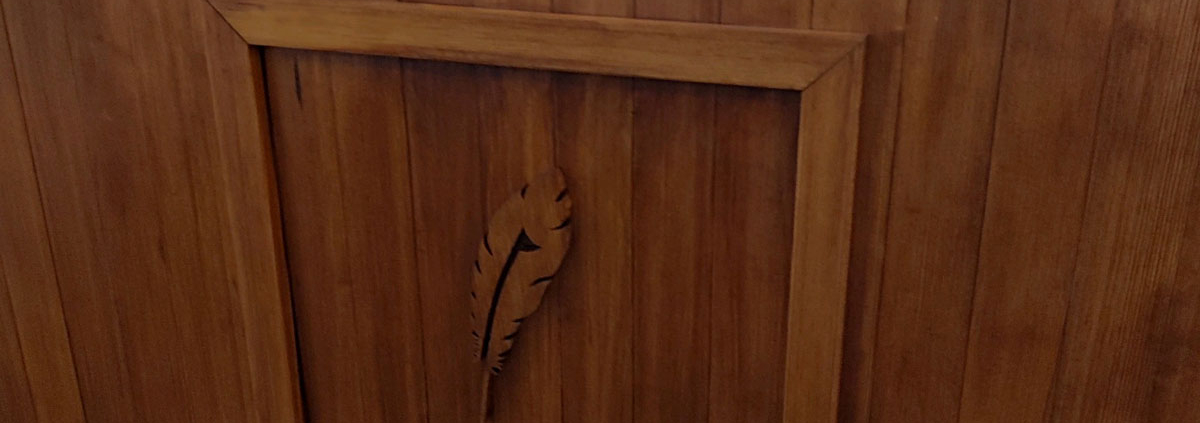 The Goodwin Company | HeartPine.com
The Goodwin Company | HeartPine.com